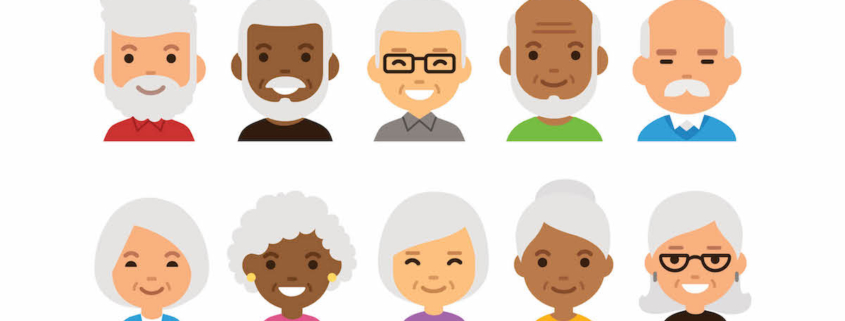What Is the Best Way to Create a Buyer Persona for Senior Living?
If you’re a regular reader of our blog, you’ve likely heard us say that effective marketing involves sending the right message to the right person at the right time. Marketing automation can help with the execution. But how do you identify who the “right” person is—and the corresponding messaging?
That’s where buyer personas come into play.
What are buyer personas?
Buyer personas are fictional representations of your ideal customers—in this case, your ideal residents and the adult children and loved ones who are often involved in making decisions. By having a clear picture of who your buyers are, you can better personalize your messaging and marketing to them.
For example, instead of sending the same lead nurturing emails to everyone in your database, you can segment by prospect persona and tailor the messaging accordingly.
Keep in mind that personas are internal documents. Marketing and sales teams use them to guide the various messaging and marketing campaigns.
What is the best way to create a buyer persona?
You create buyer personas through research, surveys, and interviews with happy residents and lost prospects.
Here are some practical methods for gathering the information you need to develop personas:
- Interview happy residents. What made them decide to make the move to senior living? Why your community? What problem did your community solve for them? Note: The “problem” isn’t necessarily going to be negative. It could be something positive like “I was ready to downsize and enjoy maintenance-free living and an active lifestyle.”
- Gather demographics. What’s the average age, the breakdown between women and men, marital status, etc.
- Review family and resident surveys. What services and amenities do your residents find most valuable?
- Talk to lost prospects. Have your sales team get into the habit of asking people why they decided to go somewhere else. You should also conduct a more formal interview with a willing lost prospect or two about their experience.
- Gather intel from your website forms. Use form fields to capture important information, like the person’s timeframe or hobbies. Take advantage of progressive profiling, which allows you to ask different questions as people download more content from your site.
- Talk to your sales team. Ask for their feedback on the leads they’re interacting with most. What generalizations can they make about the different types of residents and prospective residents you serve best? What are the most frequent questions they answer?
You should also keep track of details that would indicate when someone isn’t a good fit for your community. Whereas a prospect persona is a representation of an ideal customer, a negative—or exclusionary—persona is a representation of who you don’t want as a customer. For example, this could include prospects who require care or services that you’re unable to provide.
What happens with all the persona research?
Now, comes the fun part! You’re going to create a one-page narrative about each persona. Give the persona a name. Use images (stock images are fine) to bring the persona to life even more.
For example, you might craft narratives about “Widowed Wally” and “Single Sally” that explain who they are, their needs/pain points, and what they’re hoping to find in a senior living community. The needs of widowed men between 70 and 85 (“Widowed Wally”) will be different from single women in their 60s (Single Sally).
For example, maybe you learn that one of the most important things to the widowed men in your community is having access to delicious, nutritious meals and plenty of activities like playing cards, watching football, and playing golf. Given this, you might create lunch & learn campaigns where you invite widowed men to a free lunch at your community so they can enjoy the food and learn more about the community.
Remember, even though these are fictional representations, your personas are based on very real facts that your research uncovered. In other words, your personas will be different from another community’s personas.
How do you use buyer personas?
When combined with the lifecycle stage (i.e., how far along someone is in your sales cycle), personas allow you to map out and create highly targeted content.
For example, if an individual downloads a guide called “Understanding the Early Stages of Dementia,“ you know this individual will likely be interested in other topics related to Memory Care. The workflow for this prospect would include sharing related blogs and eBooks or inviting them to a Memory Care support group or educational program. As long as the content is relevant to their needs and pain points, your prospects will continue to be engaged and will continue through the sales funnel.
What should you do if you need help creating buyer personas?
Work with a marketing agency that excels in persona research for the senior living industry. Ahem—that would be us! Get in touch and let’s talk about personas.




